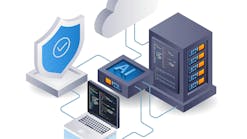Permit me the catchy headline, but let’s clarify: this op-ed focuses on unmanned aerial vehicles (UAVs), unmanned aerial systems (UASs), robotics and related data management issues. UAVs are part of UASs, as the latter term reflects UAVs’ reliance on ground-based pilots and a communications link (hence systems). The utility industry typically avoids using “drone” because of its negative connotations as a tool of war or surveillance. “Robotics” refers to intelligent machines that substitute for humans in performing difficult, dangerous or repetitive tasks. Both technologies offer utilities new capabilities for value creation, while posing data management challenges and opportunities.
Currently, power utilities are exploring UAVs and robotics to determine their capabilities, use cases and business cases. UAVs appear to be effective in asset inspection and damage assessment, particularly for high-voltage transmission lines with ample rights-of-way. Robotics are a promising technology for live-line transmission system inspections and even underwater inspections of and repairs to hydroelectric dam turbines. Both devices and their data can inform asset management programs, outage management systems and geographic information systems, to name a few established benefits. Ultimately, UAVs and robotics are simply tools that achieve fundamental business goals: improved reliability, resiliency and customer satisfaction.
UAVs and robotics generate various types of nonoperational data, including imagery from video and still photography, LiDAR, PhoDAR, infrared and chemical sensors. Power utilities are experts at handling operational data, but still need to fully exploit nonoperational data from intelligent electronic devices and new sources such as UAVs and robotics. New nonoperational data sources need to be integrated into current utility systems as seamlessly as possible and made available to all authorized personnel who can create value from them.
“Holistic data management” refers to an approach that depends on collaboration between operations technology (OT) and information technology (IT) to create an information and communications technology (ICT) foundation that embraces open architectures and standards and ensures interoperability and backwards and forwards compatibility between devices, networks and databases. All operational and enterprise units must work together to map all sensors and other data sources to end users who can create value from that data. It includes a “data mart” that pushes out key data and resulting actionable intelligence or makes data available on-demand.
The introduction of UAVs and robotics underscores the need for holistic data management and the ICT foundation to support it. Holistic data management and its technology foundation will shorten time-to-value in the adoption of UAVs and robotics and help build positive business cases for their use by widening the circle of end users who can create value from resulting data.
Meanwhile, UAV and robotics vendors may be moving faster than the power industry can keep up, extending their offerings to value-added services such as data analysis. Without a comprehensive survey of the market it isn’t possible to characterize how many vendors are using open-source architectures and standards-based data protocols. But if the power utility industry’s history is any guide, the market may well begin with a variety of proprietary solutions that fragment the market and slow the adoption curve.
In response, I’d suggest that the power industry as a whole should develop consensus on technologies, policies and standards for UAVs and robotics that provide vendors with clarity on meeting power industry requirements. This would avoid proprietary solutions that, as in the past, ultimately threaten to undercut investments, leave stranded assets and slow adoption of beneficial technologies.
I see room for optimism. Utilities are sharing their experiences in publications and conferences. The leading industry consortia — EPRI, EEI, IEEE societies, IEEE Power & Energy Society technical and coordinating committees — are assessing best practices, market offerings and automated image analysis, among other things. Efforts are afoot on supportive policies and standards.
The future always arrives faster than anticipated. Think of the “tsunami” of Big Data forecast to wash over utilities with the advent of the Internet of Things. UAVs and robotics are here now and by adopting holistic data management strategies and the ICT foundation to support them, utilities will be prepared to exploit other new nonoperational data sources. If utilities act in concert to clarify industry requirements for vendors to ease adoption, they will be better prepared for the future. ♦
An Action Plan for UAVs/Robotics
- Build a strong grid with an ICT foundation built for future needs, before building a smart grid (requires IT/OT cooperation).
- Ensure ICT networks have the bandwidth, throughput and speed to handle all operational and nonoperational data for the foreseeable future.
- Pursue solutions, supported by technology, that align with business drivers and customer needs/expectations.
- Map data from sensor to potential end user and create a “data mart” that ensures every authorized person has access to all data that creates value (requires organization-wide collaboration).
- If/when UAVs and/or robotics prove useful to any given utility, that organization will have the ICT foundation and holistic data management practices in place to make full use of these new sources of data and improve the business case for them.
- The power industry should act in concert to demand that UAV and robotics vendors meet industry requirements with standard data formats and protocols to speed time to value.
John D. McDonald is a professional engineer, an IEEE Life Fellow, CIGRE U.S. National Committee vice president for technical activities, and smart grid business development leader for GE Power’s Grid Solutions business.


